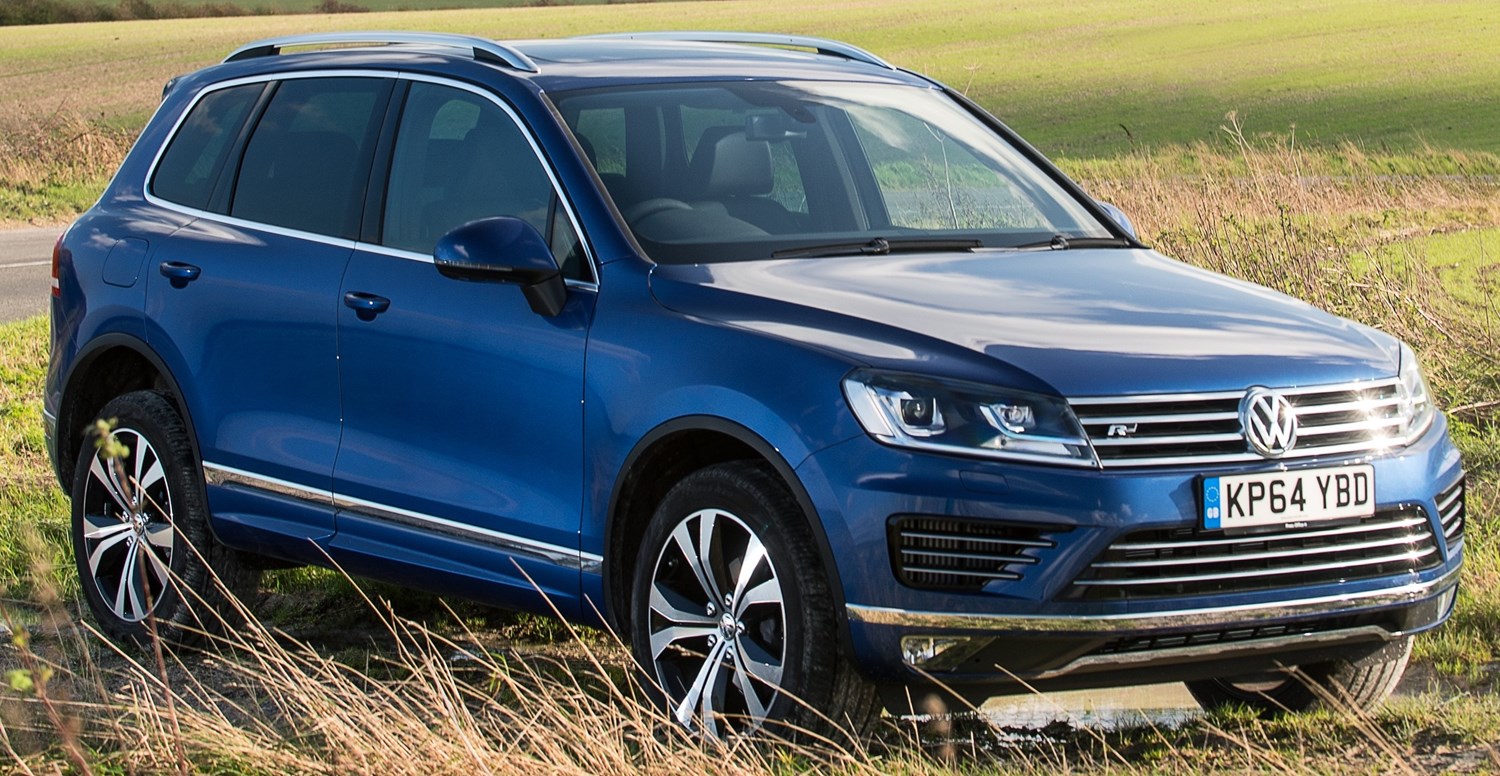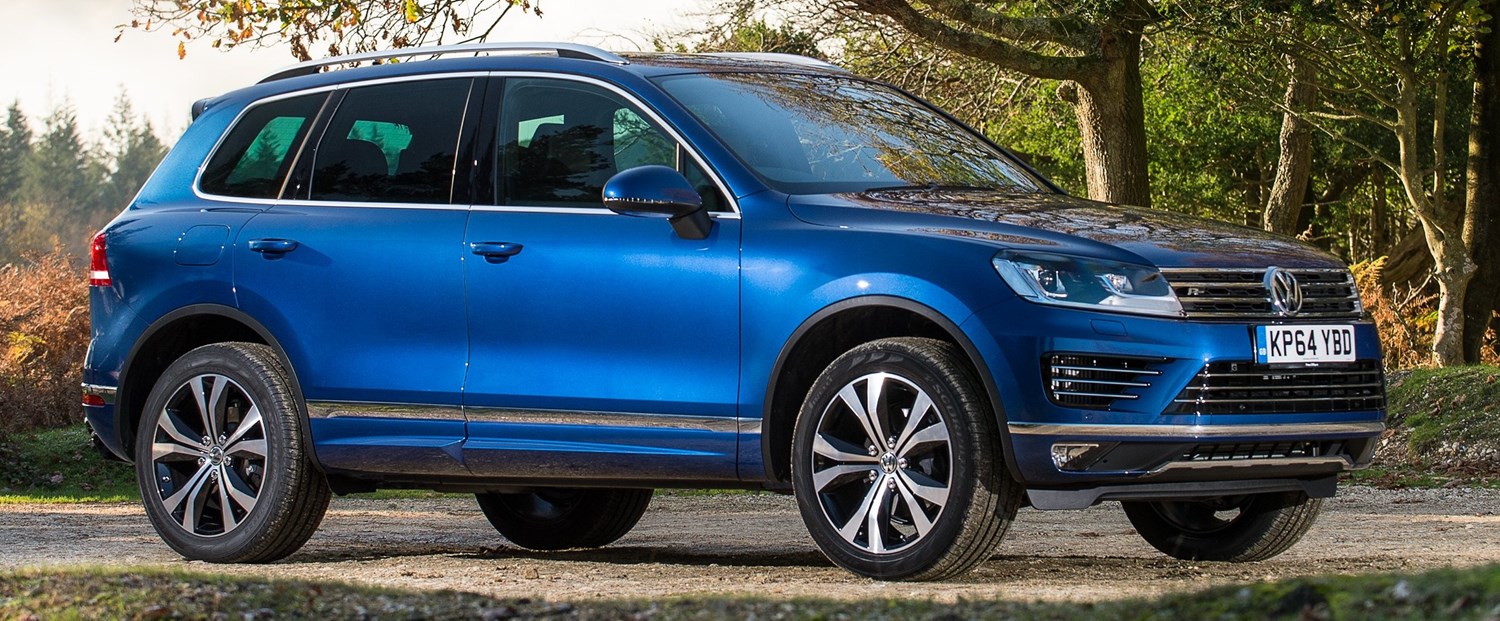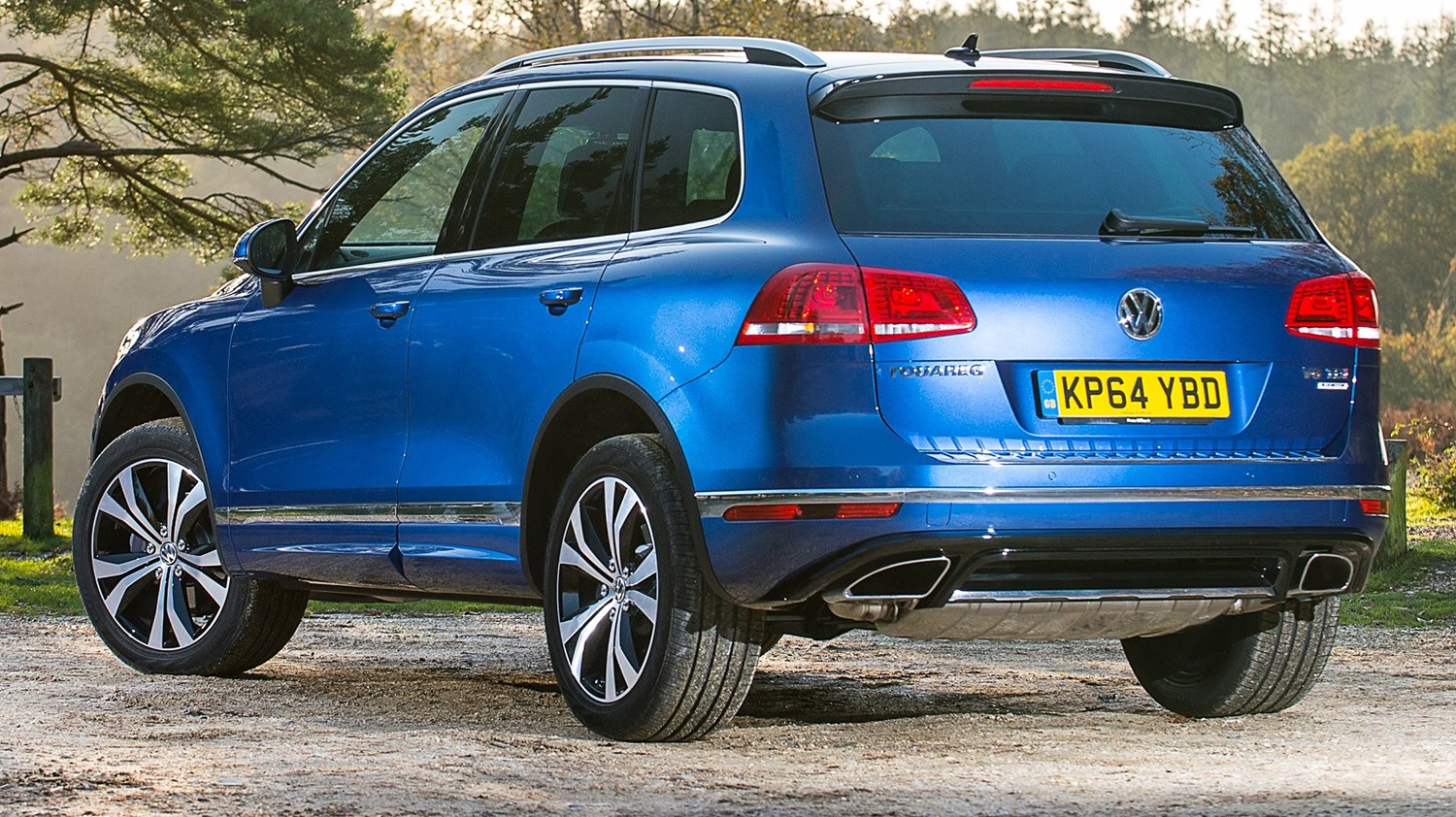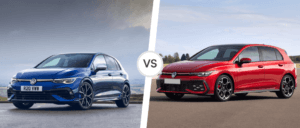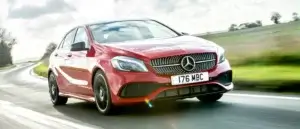Latest model
The current Touareg arrived in 2015, as a facelift of the 2010 second generation car. The facelift restyled the car to meet Volkswagen's current corporate face and take advantage of new safety technologies.
Trim levels are broadly representative of the norm for Volkswagen, with the entry model being the SE, R-Line as the next step up and R-Line Plus capping off the range. Whatever specification is chosen, the Touareg comes with four-wheel drive as standard, along with electronic two-zone climate control, DAB radio, heated front seats, hill descent control, rain sensors, heated washer jets and safety assists like automatic post-collision braking, stability control and electronic differential lock.
Whichever Touareg you choose it will be powered by a 3.0-litre V6 'TDI' diesel, in one of two states of tune, driving an 8-speed automatic gearbox. VW's '4MOTION' system drivers all four wheels. Despite the 2,185kg kerb weight of the Touareg, this translates into decent performance, and emissions for all versions is 180g/km or less – around 42mpg.
Value for money
The Touareg isn't a cheap car. An entry-level model in SE specification is £44,295, and it rises to more than £51,000 for a top specification car. However, the base line for equipment is impressive and it's a very large vehicle indeed so there's a lot of metal for the money.
In fact the SE is pretty decent value, but the car makes less sense the more options you add. R-Line is essentially a styling package with lowered sports suspension – although it does add a standard panoramic roof. R-Line Plus adds the electrically-adjustable leather seats but little else.
Heading to the options list itself pushes the value equation even further out – air suspension will run you out £2,000 (more on the SE), any paint beyond standard is £770, and adaptive cruise control is £1,770. It can get very expensive, very quickly compared to premium rivals with the same kit.
All Touaregs sit in a rather high insurance group, but as each gets around 42mpg and 176-180g/km CO2 rating, their running costs are not especially high. Beware that all cars fit into the higher VED band thanks to the high list price. Depreciation may be a concern too – a £50k car might be worth less than £20k after three years.
Looks and image
Volkswagen, in general, has a rather positive image. Despite the name – German for 'people's car' – VW has a borderline premium image, with its cars almost becoming a subtle display of wealth; not showy enough to be a full premium model, but more premium in feel than mainstream marques like Ford. It brings with a reputation for high quality, reliable vehicles.
The Touareg does little to buck that. It's a handsome and imposing vehicle, at least from the outside. While it's undeniably well-built on the inside too, it does come across as a little boring and lacking the flair of its rivals. That does, perhaps, play into the rugged and utilitarian pitch of the Touareg as the car that can take anything you throw at it, but makes it a harder sell next to more luxurious or sporting rivals.
